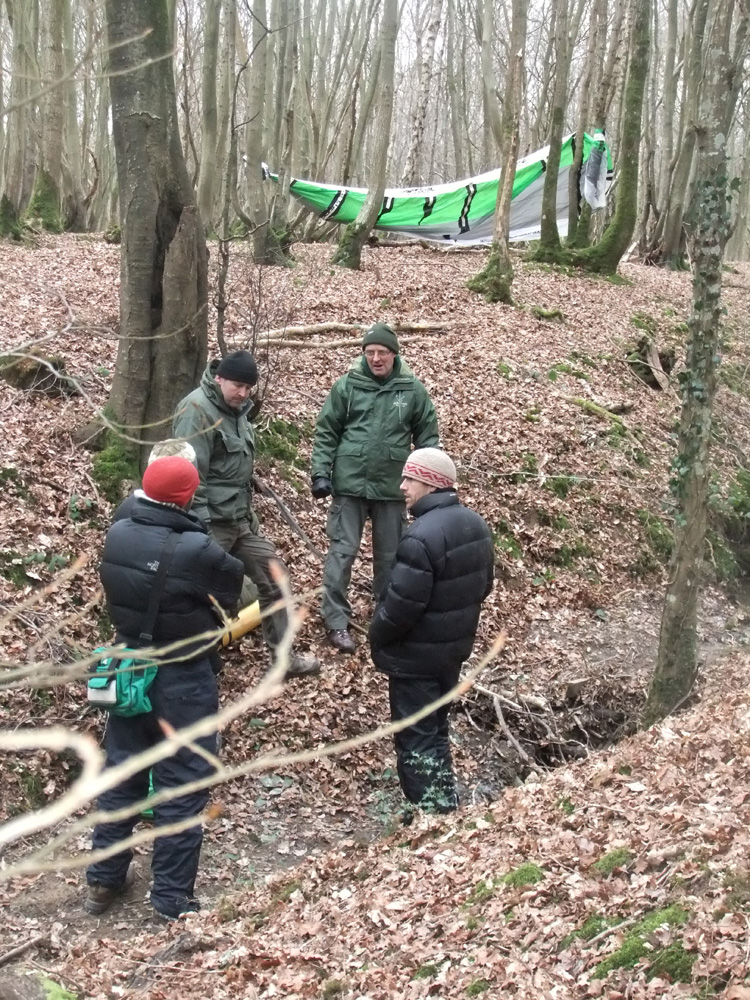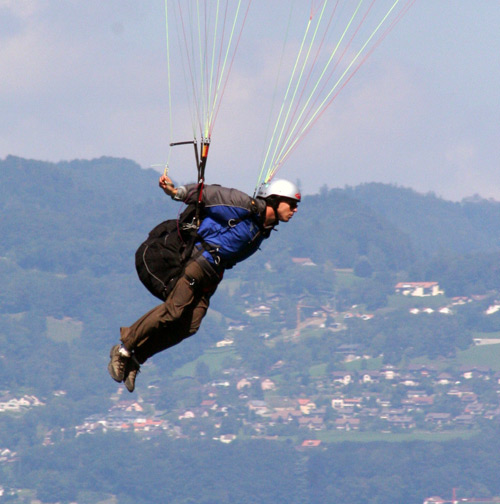
Lack of knowledge is a risk. On the blown-out days, seek out whatever flying theory you can to boost your knowledge.
Dennis Pagen's Art of Paragliding provides a useful foundation of flying knowledge.
Learn more about the weather: Understanding the Sky by Dennis Pagen is a must-read for all pilots.
After that, books like Thermal Flying and Cross-Country Flying by Burkhard Martens are brilliant for understanding how to apply alpine weather theory.
Performance Flying, again by Dennis Pagen (although aimed at hang glider pilots) is relevant for all paraglider pilots and is an absolute goldmine of information.
When you go to a new site, find a recent sites guide to reduce your risk. Most UK clubs offer comprehensive advice about their sites on the internet. But information can be outdated, and it seldom tells you anything about conditions on the day, so for site knowledge nothing beats a local pilot. When you get to the site, seek out the most experienced pilot on the launch and ask for a briefing.
There are many sites guide books available too.
Books can reduce your risk by helping to fill in the blanks in your local knowledge
There is a range of DVDs that will help expand your knowledge of wing control.
There are some gems on the internet but beware of self-appointed experts who have no evidence of ability beyond a forum-posting score. When discussions focus on flying equipment, it's easy to be misled by plausible nonsense and false information, which can be a risk if you rely on it. To get reliable flying knowledge that won’t put you at risk, talk to an instructor with a good reputation. Book yourself onto a course, a guided trip or a day of advanced instruction, and you’ll have access to all the knowledge you can absorb.
If you need specialist advice about equipment, talk to a retailer that deals in a range of brands so they can provide unbiased opinions. When it comes to the latest wings, you need someone who can match your flying skills with the right kit. Talk to other pilots and approach the retailer in your area that is consistently recommended and can offer demo flights, fittings and current knowledge based on experience with the latest designs.
Because flying involves potential dangers, first aid knowledge is always good to have, and there we’d recommend specialist courses rather than books because practical scenario training is so much better.

Rescuers consider the finer points of getting a paraglider out of a wood, or a wood out of a paraglider, during a Wilderness First Aid course
Wherever your flying takes you, actively seek out information. The more involved you become, the more your growing knowledge helps to reduce your risk.
Putting it all together. We've studied many facets of risk in this series: the weather, your wing, your gear, the site, your ability and your knowledge. It's time to consider how they work when combined. Imagine that you've bought a new glider, one class up from the one you're used to. So your WING segment is red-lining (new glider + upgrade). What can you do to reduce your risk?
Choose your elements carefully:-
- go to the safest SITE you can for the day,
- be less tolerant of risky WEATHER than usual,
- pretend that you have less ABILITY than you know you have,
- seek out as much KNOWLEDGE as you can about the wing, its rating, and the site you're flying,
- put some extra GEAR between you and the ground. Now is not the time to be flying the lightweight speed-flying harness.
See how it works? It's all about making sure you have enough other 'green lights' on your panel at all times, so you've got that margin of safety.
If you strive to minimise your risk whenever you fly, you'll start to make wise piloting decisions. As your piloting skills grow and your judgement improves, the range of options which are safe for you should increase.
When you're new to the sport, your ability to recognize danger is limited, so you only notice that you're in trouble when things are already very bad. So stay further away from the ground or venturis than other pilots to give yourself a wider margin for error. As you progress, you will develop an acute sense of intuition which will further guide you, a 'feeling' of the air that tells you when and where to fly. The more you fly, the better you get, and the more you can enjoy what this fantastic sport has to offer.

^ Feel the force
Brought to you by Flybubble
Like what we do? The best way to thank and support us is to buy gear from us and recommend us to others. Review our service on Trustpilot and our products on Flybubble Shop. You can also subscribe to Flybubble Patreon. Thank you!

